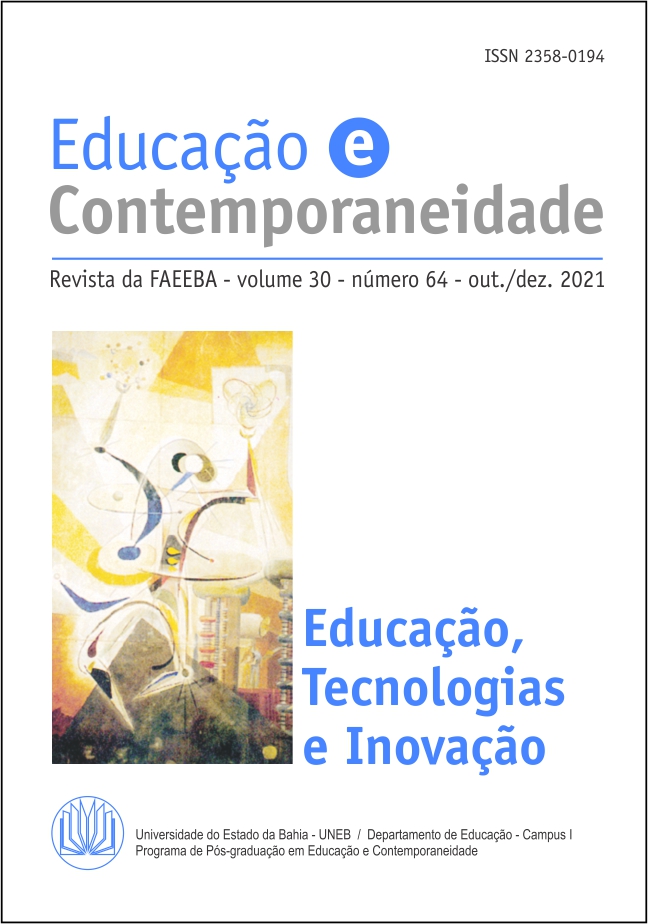Recalibrating Institutional Choreographies for future-focused learning and teaching.
DOI:
https://doi.org/10.21879/faeeba2358-0194.2021.v30.n64.p76-91Keywords:
Learning experience design and development, Learning technologies and analytics, Open educational practicesAbstract
In the wake of the COVID-19 pandemic, educational institutions worldwide have had to immediately pivot to online distance learning and teaching. While institutions with a grounding in open, distance and flexible learning have done reasonably well in the circumstances, the majority of institutions have struggled with this sudden move away from their conventional campus-based operations. Examples of the few successful adoption and implementation of online learning and teaching are however, boutique and small-scale operations in one program of study, one Department or Faculty. Clearly missing from this scenario are examples of large scale and institution-wide adoption of open, online, distance and flexible learning. This is a consequence of the limitations of existing operational infrastructure as well as mindsets. These are hard to change in the best of times, although they are long-term benefit and resilience against future disturbances of the sorts we are currently experiencing, they must change. This kind of change requires institution-wide reimagination and reengineering of conventional practices.
Downloads
References
CHANDRA, R. Foreword. In: LATCHEM, C. Fifty Years of Flexible Learning at the University of the South Pacific. Fiji: USP Press, 2018
HOLLINGS, M.; NAIDU, S. Developing Practice in the Pacific. In: MAYS, T.; SINGH, R. K. (Eds). Addressing the Learning Needs of Out-of-School Children and Youths through Expansion of Open Schooling, Commonwealth of Learning (COL), p. 235-256, 2020. Available at: http://oasis.col.org/handle/11599/3731. Access: May 1st 2021.
LATCHEM, C. Fifty Years of Flexible Learning at the University of the South Pacific. Fiji: USP Press, 2018.
MORRIS C. et al. Report of the Higher education mission to the South Pacific. London: Her Majes-ty’s Stationery Office, 1966. Available at: https://openlibrary.org/publishers/Her_Majesty’s_Statio-nery_Office. Access: May 1st 2021.
NAIDU S.; BEDGOOD, D.R. Learning in the So-cial Context. In: SEEL, N.M. (eds). Encyclopedia of the Sciences of Learning. Springer, Boston, MA: Springer, 2012. Available at: https://doi.org/10.1007/978-1-4419-1428-6_814. Access: May 1st 2021.
NAIDU, S. & Narayan, S. (Eds.) (2020). Teaching and Learning with Technology: Pushing boundaries and breaking down walls. USP Press: The University of the South Pacific.
NAIDU, S. Technology, education and design: The sciences of the artificial. In: PANIGRAHI, M. N. (Ed.). ICT integrated teacher education. In Resource Book on ICT Integrated Teacher Education, (20-30), New Delhi: Commonwealth Educational Media Centre for Asia, 2016a
NAIDU, S. The case for open educational practice. Distance Education, v. 37, n. 1, p. 1-3, 2016b. Available at: http://dx.doi.org/10.1080/01587919.2016.1157010. Access: May 1st 2021.
NAIDU, S. (Ed.). Learning and Teaching with Technology. London: Routledge, 2003.
NAIDU, S.; ROBERTS, K. J.. Future Proofing Higher Education in the Pacific with Open and Flexible Learning. Journal of Learning for Development,v. 5, n. 3, p. 280-295, 2018. https://jl4d.org/index.php/ejl4d/article/view/309/349. Access: May 1st 2021.
NARAYAN, S. Out-of-school children: A contem-porary view from the pacific island countries of the Commonwealth,. British Columbia, Canada: Commonwealth of Learning, 2021. Available at: http://oasis.col.org/handle/11599/3779. Access: May 1st 2021.
SEN, A. Development as freedom. Oxford: Oxford University Press, 1999.SOY, Susan K. The case study as a research meth-od. 1997. Available at: http://www.ischool.utexas.edu/~ssoy/usesusers/l391d1b.htm. Access: May 1st 2021.
STAKE, R.E. Multiple Case Study Analysis. New York & London: The Guildford Press, 2006.
YIN, R.K.. Case study research design and meth-od. Newbury Park: Sage, 1989
Published
How to Cite
Issue
Section
License
O encaminhamento dos textos para a revista implica a autorização para a publicação.
A aceitação para a publicação implica na cessão de direitos de primeira publicação para a revista.
Os direitos autorais permanecem com os autores.
Após a primeira publicação, os autores têm autorização para a divulgação do trabalho por outros meios (ex.: repositório institucional ou capítulo de livro), desde que citada a fonte completa.
Os autores dos textos assumem que são autores de todo o conteúdo fornecido na submissão e que possuem autorização para uso de conteúdo protegido por direitos autorais reproduzido em sua submissão.
Atualizado em 15/07/2017

















































